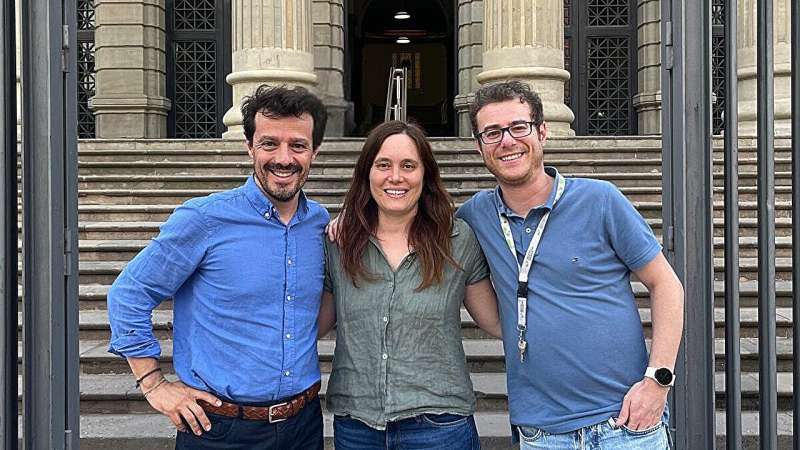This article has been reviewed according to Science X's editorial process and policies. Editors have highlighted the following attributes while ensuring the content's credibility:
fact-checked
peer-reviewed publication
trusted source
proofread
Researchers discover that a type of childhood leukemia originates during fetal development

A team of researchers has demonstrated that some childhood leukemias originate during embryonic development, although they do not manifest after a few months after birth.
The team includes researchers from the Institute of Oncology of the University of Oviedo (IUOPA), the Josep Carreras Leukemia Research Institute, the University of Barcelona and the Center for Biomedical Research in Cancer Network (CIBERONC).The study is published in the journal Leukemia.
Acute myeloid leukemia is the second most common type of acute leukemia in childhood and can be diagnosed within a few months of life. The early onset of the disease had led to the suspicion that the tumor could have a prenatal origin. However, proving this theory has been challenging due to the lack of prenatal or birth samples.
"The opportunity to study the origin of this leukemia arose from the case of a 5-month-old baby diagnosed with acute myeloid leukemia at the Hospital Niño Jesús in Madrid," explains Pablo Menéndez, ICREA professor at the University of Barcelona and the Josep Carreras Institute. "The parents, who had preserved the umbilical cord blood, opened a line of research that until now had not been possible to address."
Using precision medicine techniques, researchers analyzed the complete genome of the tumor. Unlike tumors in adults, where thousands of mutations are detected, only two chromosomal alterations were identified in this leukemia.
"Genome analysis allowed us to design a personalized diagnostic method to monitor the disease," says Xose S. Puente, Professor of Biochemistry at the University of Barcelona. Puente, Professor of Biochemistry and Molecular Biology at the University of Oviedo. "But these data raise new questions, such as when the tumor arose and in what order these mutations have appeared," he says.
These questions are difficult to answer, since such research requires blood samples from the baby before the diagnosis, something that is impossible in the vast majority of cases. However, in this particular case, the existence of a frozen umbilical cord sample allowed researchers to separate different populations of blood cells at birth and to study whether any of the chromosomal alterations detected in the tumor were already present during fetal development.
The study revealed that a translocation between chromosome 7 and 12 was already present in some hematopoietic stem cells in the umbilical cord. In contrast, the other chromosomal alteration, a trisomy of chromosome 19, was not present in the fetus, but was found in all tumor cells, suggesting that it contributes to increasing the malignancy of the leukemic cells.
"These data are highly relevant for understanding the development of a devastating disease, and the existence of this umbilical cord sample was crucial to be able for conducting a study that had been impossible until now in acute myeloid leukemia," adds Talía Velasco, researcher at the Josep Carreras Institute and the University of Barcelona and co-leader of the study.
In addition to reconstructing the genomic alterations that the cells undergo to generate this leukemia, the study has also identified a molecular mechanism that had not been observed before in this type of leukemia and which causes the activation of a gene, called MNX1, which is frequently altered in this type of tumor.
Knowledge of these alterations is essential for developing cell and animal models that allow us to understand the disease's evolution and develop new therapies for treating these pathologies.
More information: Pablo Bousquets-Muñoz et al, Backtracking NOM1::ETV6 fusion to neonatal pathogenesis of t(7;12) (q36;p13) infant AML, Leukemia (2024). DOI: 10.1038/s41375-024-02293-9

















